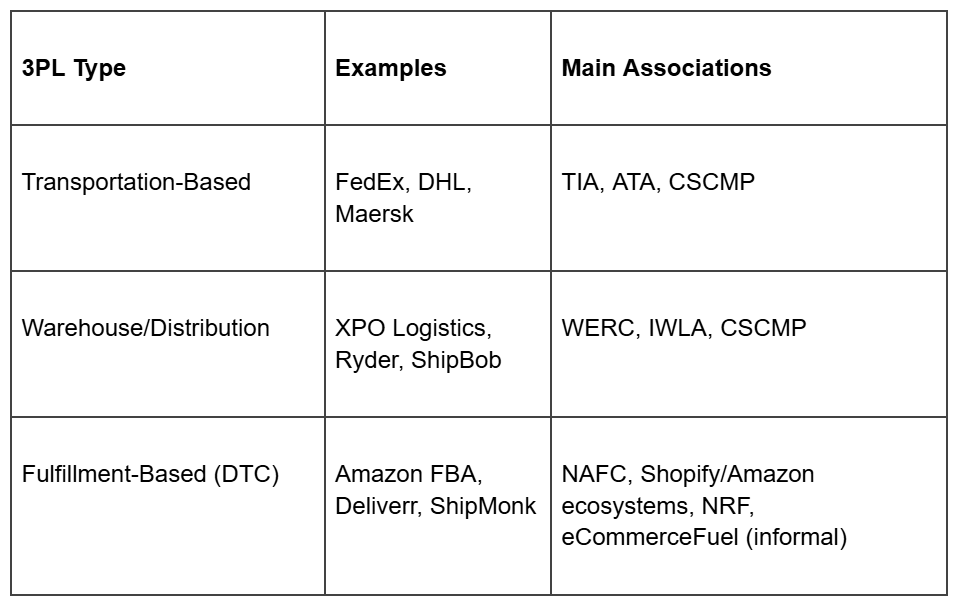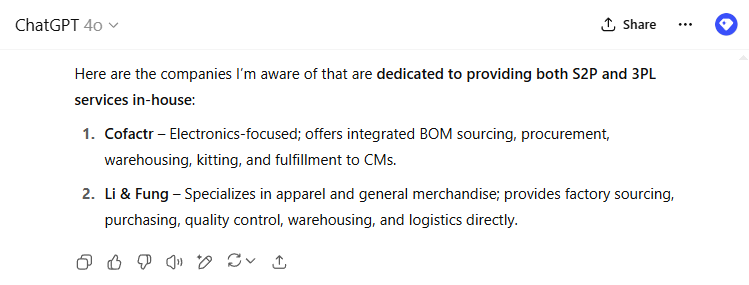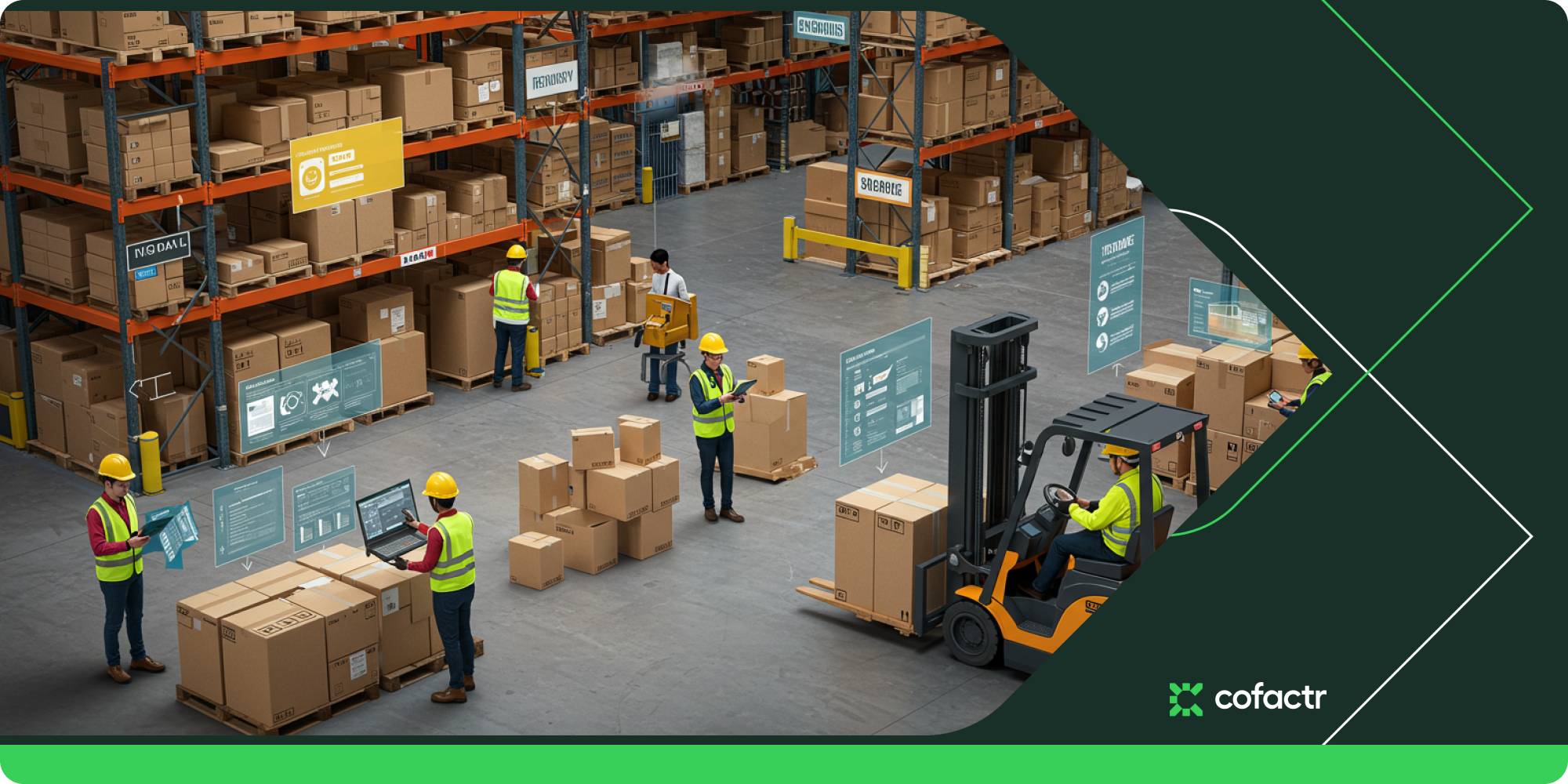Table of contents
If you manufacture electronic hardware, especially for medical or defense applications, you already know that logistics isn’t just logistics. Regulatory constraints, moisture-sensitive components, and hyper-tight production schedules mean that logistics decisions can make or break a build. And yet, many teams still lump every third-party logistics provider under one generic acronym: 3PL.
That’s a mistake.
What Is a 3PL, Really?
3PL stands for Third-Party Logistics. These companies take over part (or all) of your logistics operations: warehousing, transportation, fulfillment, or some combination of the three. But not all 3PLs are created equal. In practice, there are three major types, and picking the wrong one can mean inventory delays, handling errors, or noncompliance at the worst possible time.
Read More: Signs You Need an Electronics 3PL
Transportation-Based 3PLs
Think: Freight Movers
These are the folks getting your stuff from Point A to Point B. Sometimes they own trucks, planes, or ships (like FedEx, DHL, or Maersk). Sometimes they just broker the route.
Common Services
- Freight forwarding
- Drayage
- Cross-border shipping
- Last-mile delivery
Best For
- High-volume lanes
- Complex international routes
- Specialized handling (like temperature control or hazmat)
Industry Associations
Watch Out For: Since your shipments include electronic parts you’ll want a transportation 3PL who knows how to handle ESD, MSL-sensitive electronics, and all your compliance requirements.
Warehouse/Distribution-Based 3PLs
Think: Inventory Infrastructure
These 3PLs focus on storing your goods and prepping them for shipment. They might do picking, packing, kitting, and even light assembly.
Common Services
- Storage and inventory control
- Cross-docking
- Kitting
- Returns processing
Best For
- Teams managing multiple suppliers or staggered production timelines
- OEMs building toward regulated end-markets that require inventory traceability
Industry Associations
- Warehousing Education and Research Council (WERC)
- International Warehouse Logistics Association (IWLA)
Watch Out For: Partial reels, cut tape, and moisture-sensitive parts stored improperly can wreck a run. A good warehouse 3PL understands dry packing, desiccant protocols, and what a 40°C low-RH bake means. You’ll also want industry compliant ESD and traceability as minimum requirements.
Read More: Should Your 3PL Be ITAR/EAR Compliant?
Fulfillment-Based 3PLs
Think: eCommerce Specialists (but not just for Shopify)
These 3PLs are built for speed. They specialize in high-SKU, high-turnover environments, typically direct-to-consumer.
Common Services
- Order receipt and processing
- Picking and packing
- Kitting and custom labeling
- Shipping to individual recipients
Best For
- eCommerce stores
- DTC hardware startups
- Sampling programs and small-batch distributions
Industry Associations
- National Association of Fulfillment Centers (NAFC) (growing)
- Shopify Partners, Amazon SPN
- eCommerceFuel and DTCX (community-based)
Watch Out For: Fulfillment 3PLs are not typically set up for compliance-intensive work. If you’re shipping components for later assembly, they may not have processes for component-level traceability or MSL tracking.
3PL Examples by Type

Hybrid Models and 4PLs
The lines between 3PL types are blurry. Many providers straddle categories:
- FedEx Supply Chain blends freight and warehousing.
- ShipMonk does fulfillment and storage.
- Some services go even further and operate as 4PLs, managing other 3PLs on your behalf.
Mainly 4PL means a 3PL that is managing other 3PLs in a logistics chain, like cargo ship to train to truck.
Matching 3PL Type to Use Case
Here's how to think about your own logistics requirements:
Use a transportation-based 3PL if:
- You're importing components internationally.
- You need white-glove service or special handling like air cushion or climate control throughout shipping and handling.
Use a warehouse/distribution 3PL if:
- You are consolidating multiple component vendors.
- You need storage that respects MSL, ESD, and other sensitive requirements.
Use a fulfillment 3PL if:
- You’re shipping final goods to individual customers.
- Your volumes are high and SKUs are numerous.
Read More: Choosing the Right 3PL: A Cross-Functional Decision
Why Cofactr Is Different
Logistics providers don’t offer both 3PL and Source-to-Pay (S2P) services. Cofactr is one of only two companies in the world, alongside Li & Fung in apparel, offering both, fully in-house.

What Cofactr Offers
- Proprietary tools for sourcing and procurement
- Supplier payment consolidation
- Owned and operated warehouses in NYC and CA
- ESD & MSL-compliant storage and handling
- Kitting and fulfillment to contract manufacturers
- ITAR and SOC 2 compliant data handling
The Takeaway:
- Generic 3PL solves a logistics problem.
- Cofactr solves a production-readiness problem.
Read More: How We Accomplished ITAR Compliance
Final Thought: Pick for Precision, Not Hype
Don’t just go with the biggest name or the cheapest quote. Choose the 3PL that understands your specific needs, especially if your products come with compliance baggage. Talk to your providers. Ask about MSL handling, traceability, and their ability to scale as you grow.
Want to make this easy? Schedule a free, no obligation Cofactr demo to see how we can help you automate price evaluation, component swaps, and much more.




